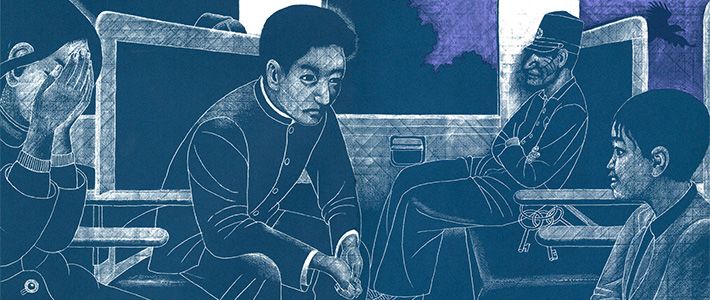
New Perspectives on Miyazawa Kenji
Illustrating Miyazawa Kenji (Photo Gallery)
Culture- English
- 日本語
- 简体字
- 繁體字
- Français
- Español
- العربية
- Русский
Eternally Unfinished
When children’s author and poet Miyazawa Kenji died in 1933 at the age of 37, his only works in print were the story collection Chūmon no ōi ryōriten (The Restaurant of Many Orders) and poetry volume Haru to Shura (Spring and Asura), which he had self-published some nine years earlier. A rich treasury of unpublished works was subsequently discovered, including such classic tales as Ginga tetsudō no yoru (Night on the Galactic Railroad), Kaze no Matasaburō (Matasaburō the Wind Imp) and “Sero hiki no Gōshu” (“Gorsch the Cellist”). All of these manuscript works had been heavily revised. Kenji is perhaps best known for Night on the Galactic Railroad, which tells the story of a poor, solitary boy called Giovanni and his friend Campanella, who board a fantastic steam engine and travel to the stars. The Iwate-born writer was working on this novella until shortly before his death and it is considered to be unfinished.
His most famous poem, “Ame ni mo makezu” (“Undefeated by the Rain”), was found as a notebook entry written in pencil from his sickbed and dated November 1931, two years before his death. There are clear signs that he later edited words and phrases, and this too may have been a work in progress. Yet Kenji himself wrote in musings on folk art that “eternal incompletion is completion.”
Enduring Influence
Artists and researchers continue to be drawn to the paths of the writer’s inquiring spirit and the intense, visionary imagery of his literary landscapes. The designer Kobayashi Toshiya is among those fascinated. Rather than Kenji’s spiritual beliefs or way of life, however, Kobayashi is most interested in conveying the appeal of his stories. In 1979, this led him to start what has become a series of picture books based on these works. The covers and illustrations below present windows into Kenji’s world.
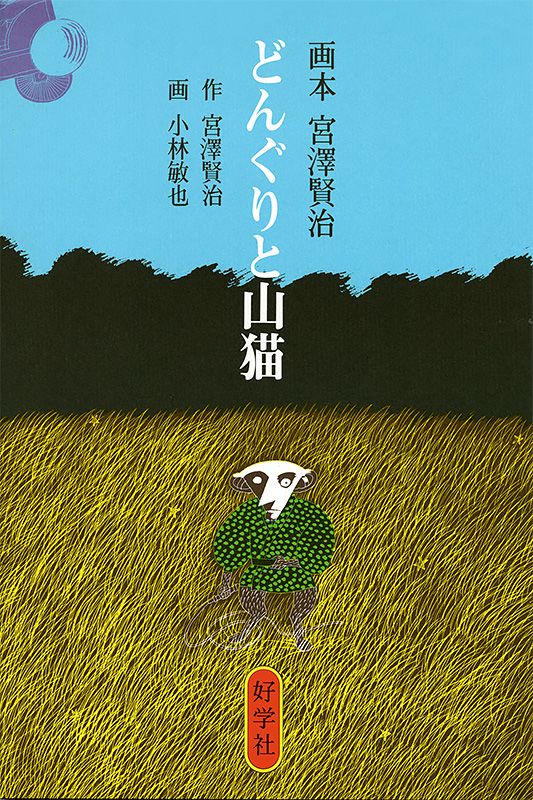 The cover of Donguri to Yamaneko (trans. "Acorns and Wildcat")
The cover of Donguri to Yamaneko (trans. "Acorns and Wildcat")
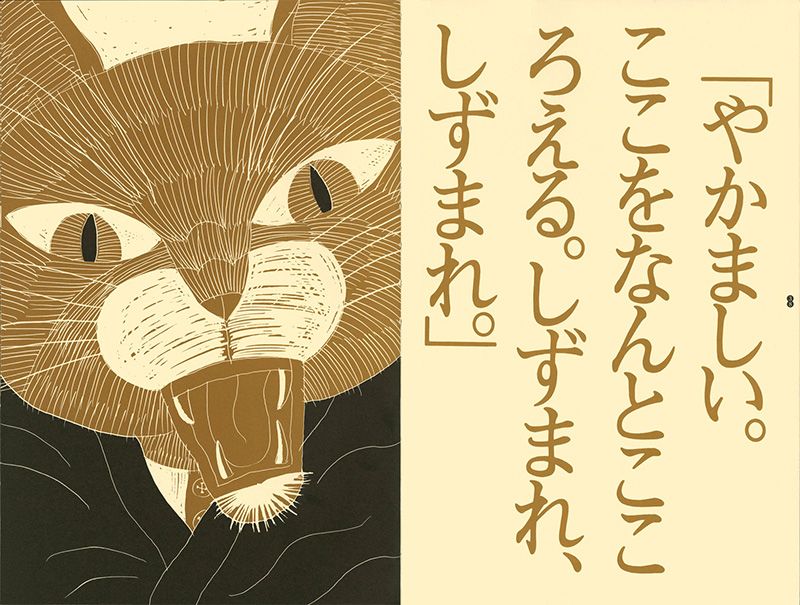 A wildcat sends Ichirō a postcard, inviting him to a trial among some acorns. They are arguing over which of them is the best acorn.
A wildcat sends Ichirō a postcard, inviting him to a trial among some acorns. They are arguing over which of them is the best acorn.
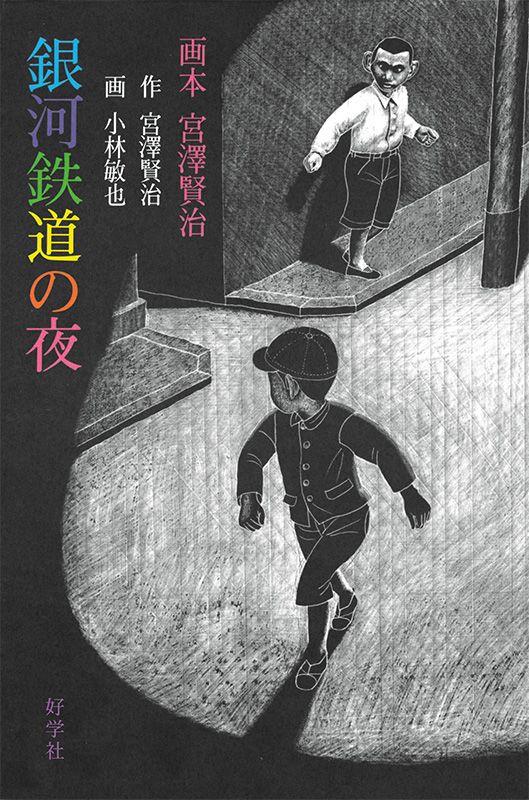 The cover of Night on the Galactic Railroad.
The cover of Night on the Galactic Railroad.
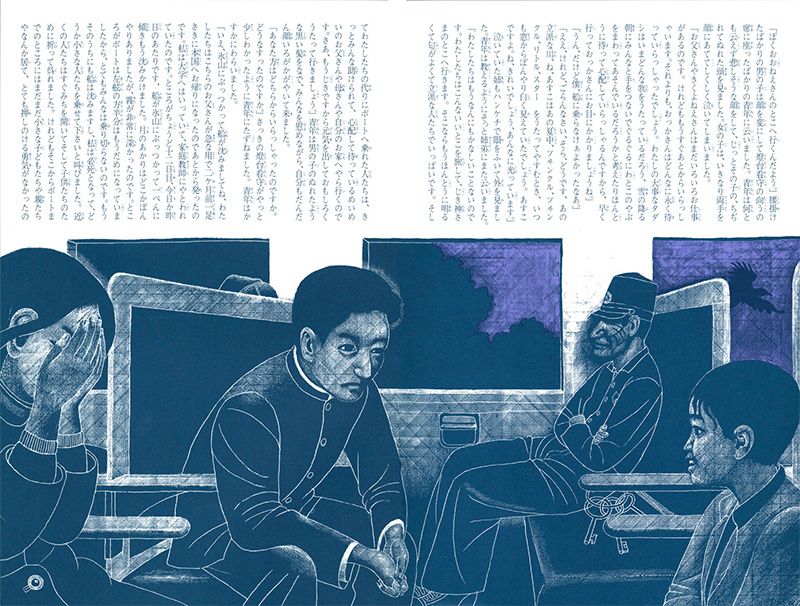 The passengers on the train heading for the Southern Cross terminal of the Galactic Railroad include people who were on board a ship that sank after colliding with an iceberg.
The passengers on the train heading for the Southern Cross terminal of the Galactic Railroad include people who were on board a ship that sank after colliding with an iceberg.
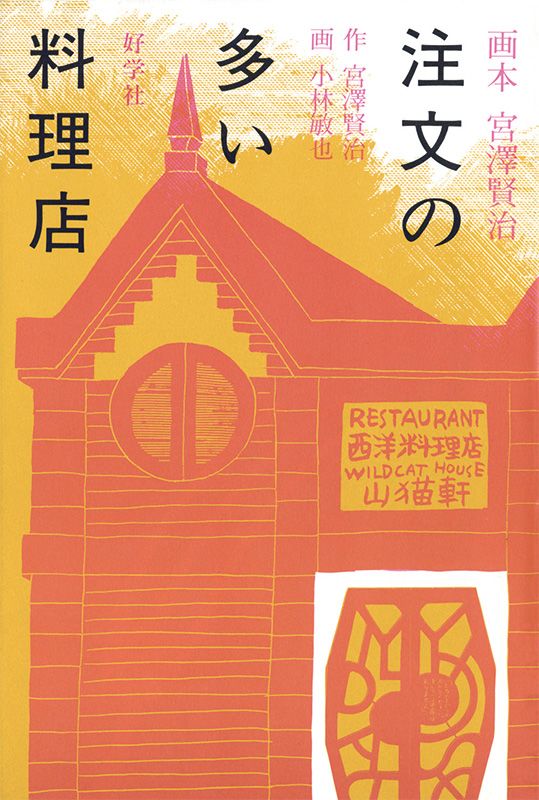 The cover of The Restaurant of Many Orders.
The cover of The Restaurant of Many Orders.
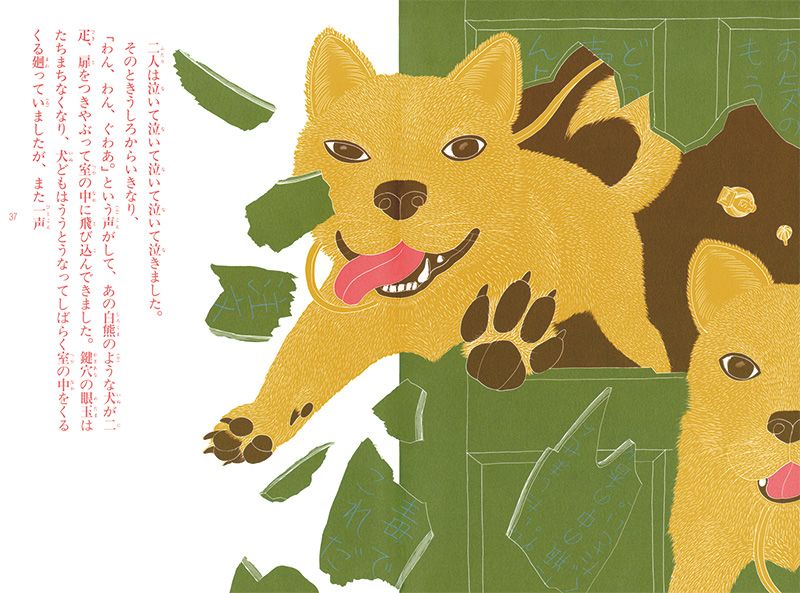 Two gentlemen hunters with guns and huge dogs arrive at a Western-style restaurant in the mountains. A sign with yellow lettering tells them that they have arrived at “The Restaurant of Many Orders.”
Two gentlemen hunters with guns and huge dogs arrive at a Western-style restaurant in the mountains. A sign with yellow lettering tells them that they have arrived at “The Restaurant of Many Orders.”
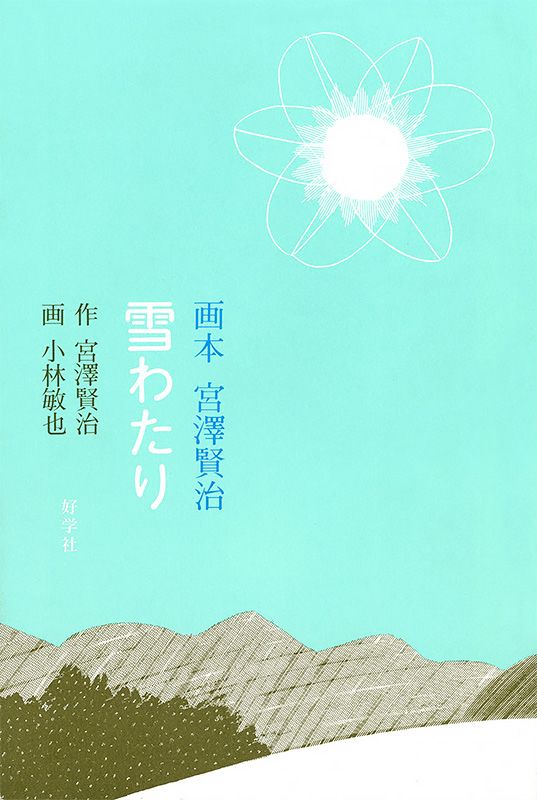 The cover of Yukiwatari (Snow Crossing).
The cover of Yukiwatari (Snow Crossing).
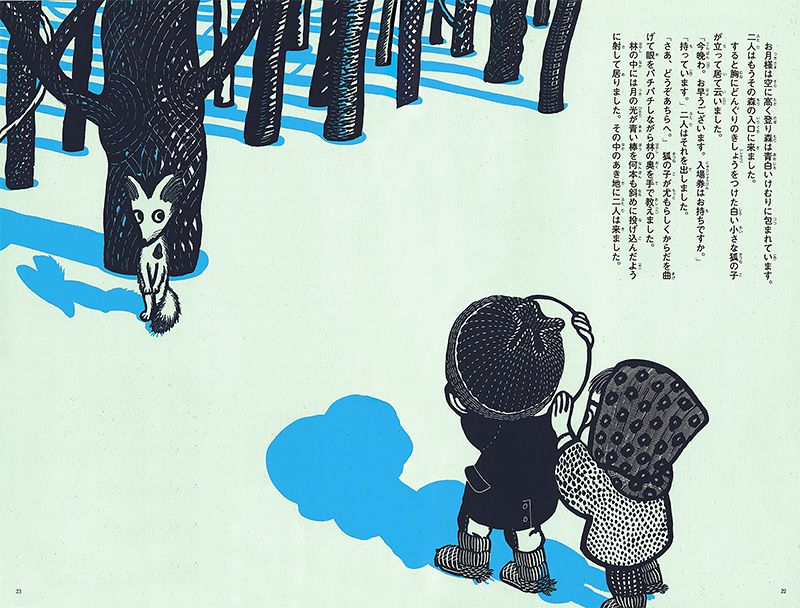 Brother and sister Shirō and Kanko are invited to a foxes’ magic lantern show. They cross the snow and go into the forest.
Brother and sister Shirō and Kanko are invited to a foxes’ magic lantern show. They cross the snow and go into the forest.
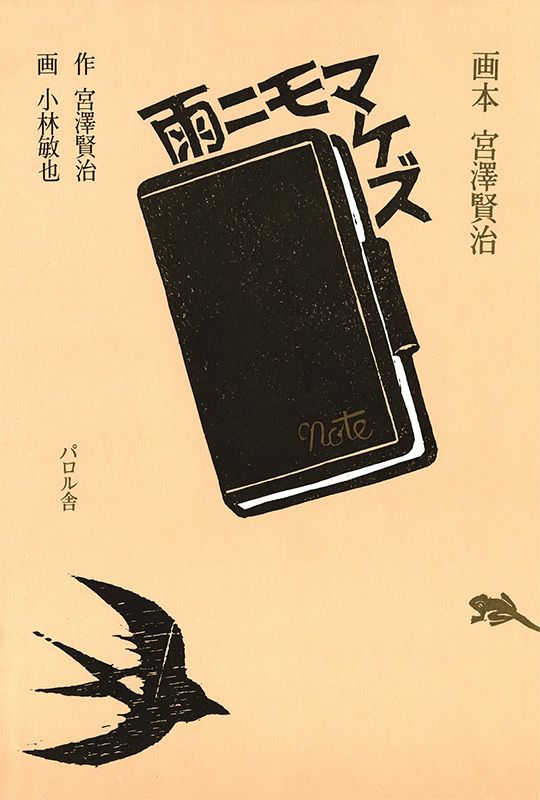 The cover of Undefeated by the Rain.
The cover of Undefeated by the Rain.
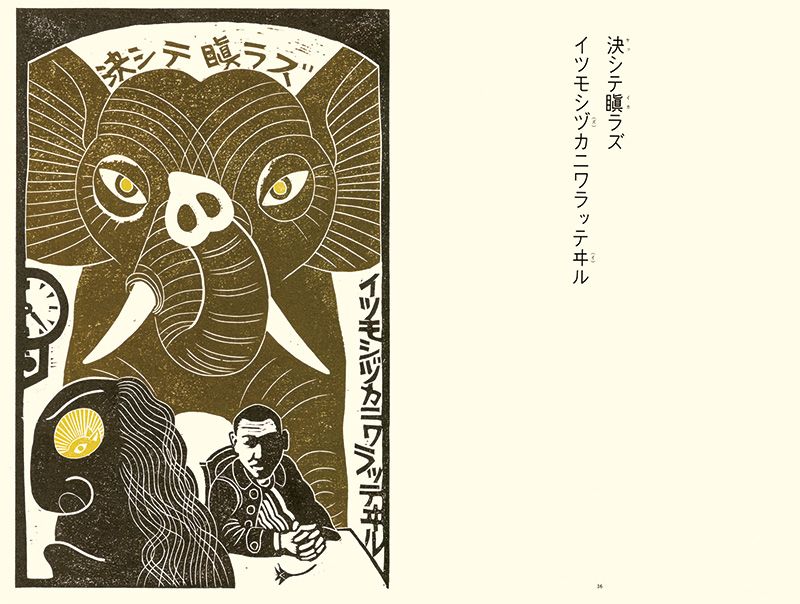 The poem sets forth an ideal vision of the person Kenji would like to be: someone who quietly overcomes hardships and helps others.
The poem sets forth an ideal vision of the person Kenji would like to be: someone who quietly overcomes hardships and helps others.
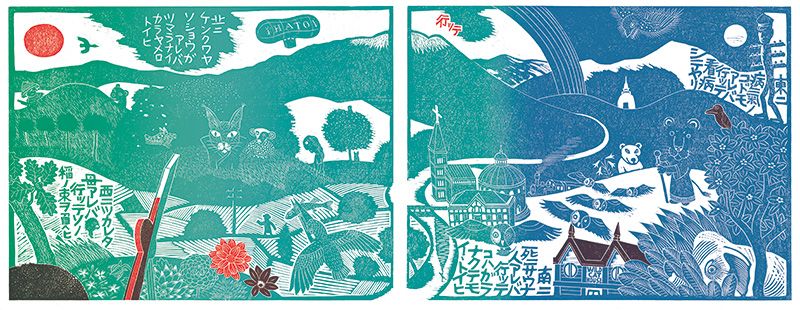 The poet is ready to go anywhere to help others. These illustrations accompany lines in the poem about going to the north, south, east, or west.
The poet is ready to go anywhere to help others. These illustrations accompany lines in the poem about going to the north, south, east, or west.
The Series Continues
From 1979 to 2000, Kobayashi worked on 15 books in the series published by Parorusha. After the company’s bankruptcy, however, there was a long hiatus before another publisher, Kōgakusha, began printing the books again from 2013. In July of this year, to mark 120 years since Kenji’s birth, Kōgakusha published Zashiki bokko no hanashi (Sprite Stories), a new entry in Kobayashi’s series.
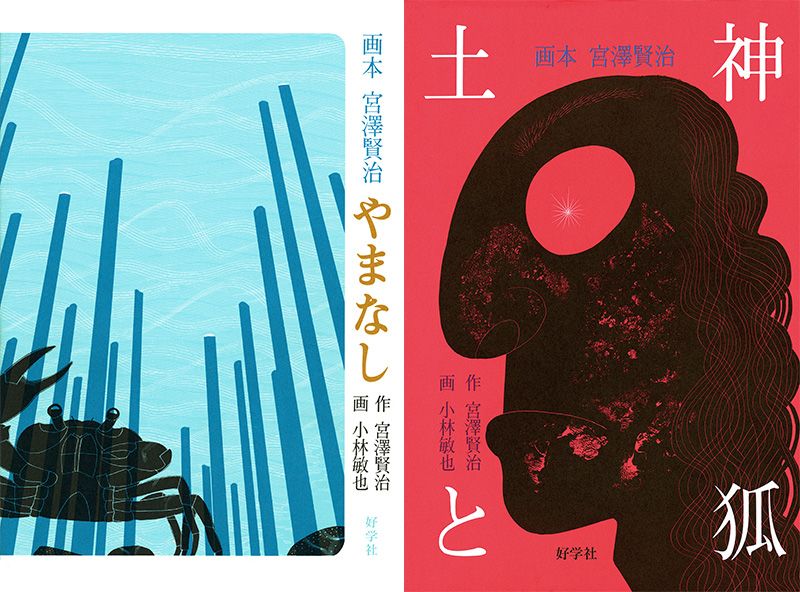 The covers of Yamanashi (trans. "The Wild Pear") and Tsuchigami to kitsune (trans. "The Earthgod and the Fox").
The covers of Yamanashi (trans. "The Wild Pear") and Tsuchigami to kitsune (trans. "The Earthgod and the Fox").
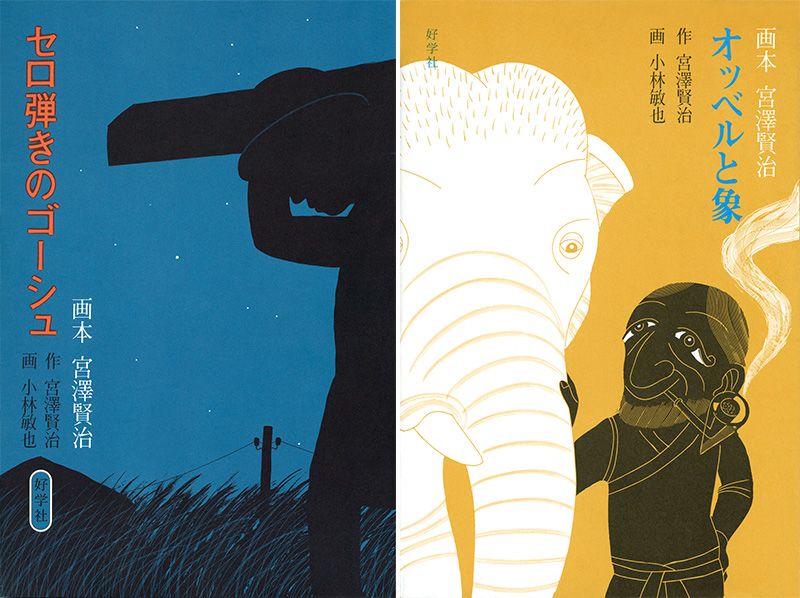 The covers of Gorsch the Cellist and Obberu to zō (trans. "Obber and the Elephant").
The covers of Gorsch the Cellist and Obberu to zō (trans. "Obber and the Elephant").
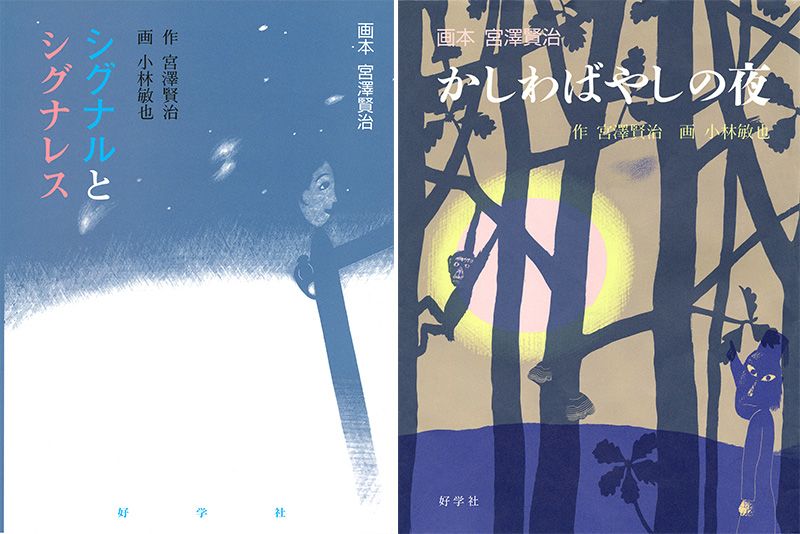 The covers of Shigunaru to Shigunaresu (Signal and Signaless) and Kashiwabayashi no yoru (trans. "The Eve of the Oak Grove").
The covers of Shigunaru to Shigunaresu (Signal and Signaless) and Kashiwabayashi no yoru (trans. "The Eve of the Oak Grove").
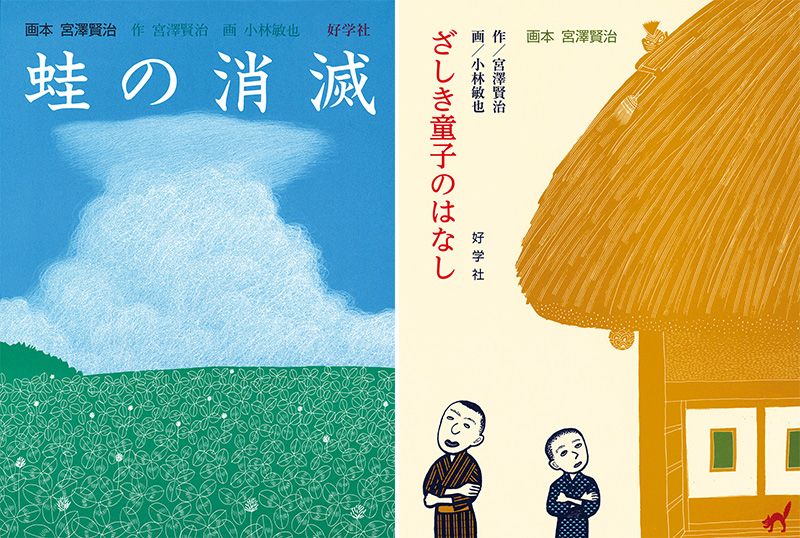 The covers of Kaeru no shōmetsu (Disappearance of the Frogs) and Sprite Stories.
The covers of Kaeru no shōmetsu (Disappearance of the Frogs) and Sprite Stories.
 Miyazawa Kenji and the Art of the Picture Book: The Work of Kobayashi Toshiya
Miyazawa Kenji and the Art of the Picture Book: The Work of Kobayashi Toshiya